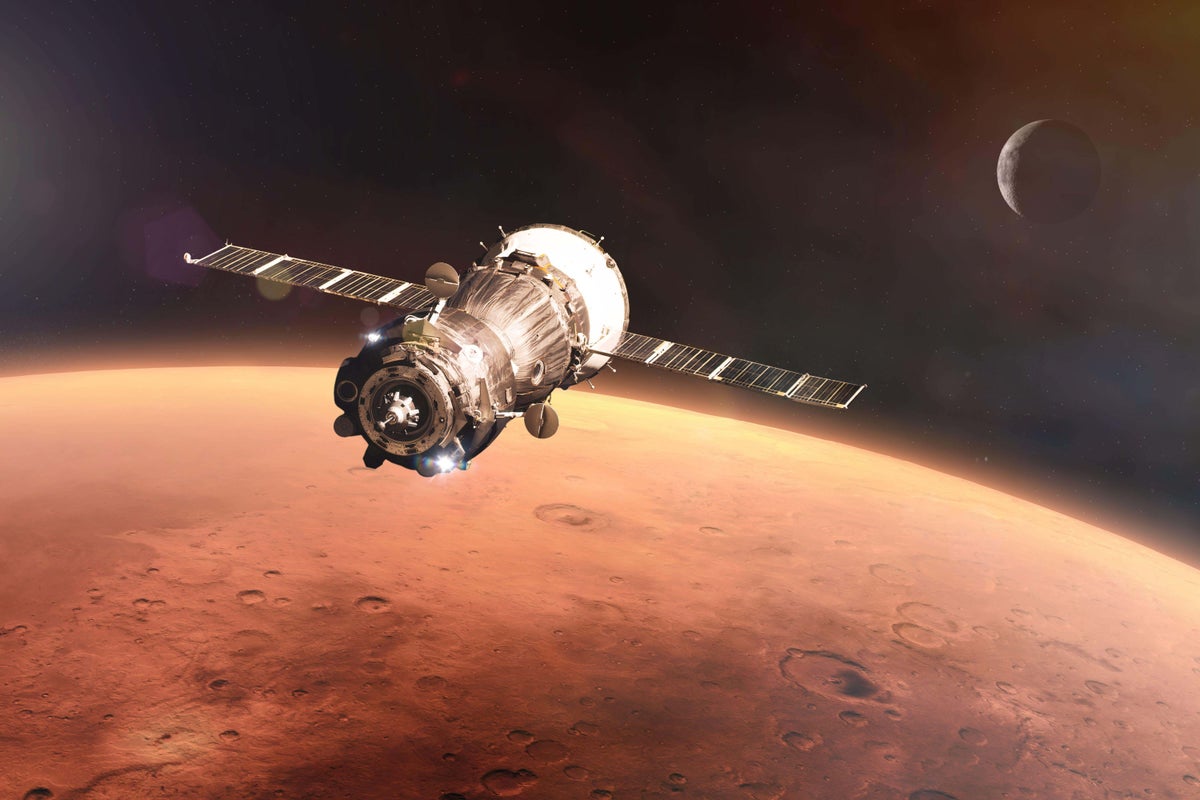Science
NASA Unveils Potential Signs of Past Life in Martian Rocks

NASA has announced a significant discovery on Mars that could provide vital clues about the planet’s potential to have supported life in the past. The agency reported finding distinct mineral patterns resembling “leopard spots” in the clay-rich rocks at the edge of Jezero Crater, which is believed to have been an ancient lake nourished by Martian river systems. This area is currently being explored by the NASA Perseverance Rover, which has been actively searching for evidence of past microbial life.
The newly identified patterns in the Martian rocks are particularly intriguing because they bear a resemblance to microbial imprints found on Earth. While definitive proof of life on Mars remains elusive, these findings have rekindled discussions about the planet’s habitability, both in its ancient past and possibly even today. To validate these hypotheses, scientists will require a variety of evidence to support the notion that life could have existed on Mars and may still survive in some form.
Comparing Earth and Mars: A Historical Perspective
The early environments of Earth and Mars shared several similarities, including atmospheres and magnetic fields that provided protection from harmful solar radiation, as well as the presence of liquid water on their surfaces. These conditions contributed to the emergence of life on Earth, leading researchers to speculate whether a similar process could have occurred on Mars.
However, as Mars’s core cooled, it lost its magnetic field, exposing the planet to solar radiation that eroded its atmosphere. This transformation resulted in the cold, dry conditions that characterize Mars today. Consequently, many scientists do not expect to find living organisms on the Martian surface, given the planet’s inhospitable environment. Instead, the search for life has shifted towards more protected regions, such as underground or icy areas that may harbor microbial life.
Potential habitats for Martian microbes include caves, beneath ice sheets at the poles, or in deep subterranean environments. These areas on Mars could provide the necessary conditions for life to exist, similar to analog environments on Earth, where microorganisms thrive in extreme conditions.
Exploring the Martian Subsurface
The Martian subsurface, extending from a few meters to several kilometers deep, is considered one of the most promising habitats for microbial life. While the surface is largely inhospitable, it is believed that the deep subsurface may offer more favorable conditions. On Earth, the deep biosphere is home to a significant portion of microbial life, which survives in rock fractures and relies on lithoautotrophs—microbes that obtain energy from the minerals in rocks.
Interestingly, scientists have detected methane on Mars, a byproduct of some lithoautotrophic processes. While the presence of methane does not definitively indicate life, it raises important questions about the potential for biological processes occurring underground.
The viability of a deep biosphere on Mars depends on several factors, including the presence of liquid water, energy sources, adequate living space, and tolerable temperatures. There is ongoing debate regarding the existence of liquid water beneath the Martian surface, but evidence supporting its presence could enable chemical reactions that provide energy for microbial life.
Mars’s lower gravity may also result in less compressed rocks, which could remain more porous than those on Earth, allowing for greater microbial habitation. Additionally, because Mars generates less heat from its interior, conditions suitable for life may extend deeper underground than they do on Earth.
To better understand the potential for past and present life on Mars, scientists are studying Earth’s extreme environments that act as analogs. These include the Atacama Desert in South America, sediments at Lake Salda in Turkey, and salts found in Utah’s Pilot Valley. Research in these locations provides insights into how Martian conditions may affect life and its preservation.
Laboratory experiments are also critical for advancing our understanding. Researchers utilize specialized “Mars chambers” to simulate the atmospheric, radiation, and temperature conditions of Mars. These combined efforts are essential for deciphering the potential for life on the Red Planet.
Although there is currently no conclusive evidence of life on Mars, NASA’s discovery of the “leopard spots” marks one of the most promising leads to date. If life exists on Mars today, it is likely not as widespread as it is on Earth, as current exploration efforts have not detected it.
Looking ahead, significant opportunities for discovery lie on the horizon. The European Space Agency’s upcoming ExoMars Rosalind Franklin rover is set to drill up to two meters below the Martian surface, allowing scientists to investigate the shallow subsurface for potential living microorganisms.
While this mission represents a substantial step forward, most scientists agree that deeper exploration is necessary. Probing the Martian subsurface presents significant scientific and engineering challenges, but it may ultimately reveal crucial information regarding the existence of life on Mars.
-

 Health3 months ago
Health3 months agoNeurologist Warns Excessive Use of Supplements Can Harm Brain
-

 Health3 months ago
Health3 months agoFiona Phillips’ Husband Shares Heartfelt Update on Her Alzheimer’s Journey
-

 Science2 months ago
Science2 months agoBrian Cox Addresses Claims of Alien Probe in 3I/ATLAS Discovery
-

 Science2 months ago
Science2 months agoNASA Investigates Unusual Comet 3I/ATLAS; New Findings Emerge
-

 Science1 month ago
Science1 month agoScientists Examine 3I/ATLAS: Alien Artifact or Cosmic Oddity?
-

 Entertainment5 months ago
Entertainment5 months agoKerry Katona Discusses Future Baby Plans and Brian McFadden’s Wedding
-

 Science1 month ago
Science1 month agoNASA Investigates Speedy Object 3I/ATLAS, Sparking Speculation
-

 Entertainment4 months ago
Entertainment4 months agoEmmerdale Faces Tension as Dylan and April’s Lives Hang in the Balance
-

 World3 months ago
World3 months agoCole Palmer’s Cryptic Message to Kobbie Mainoo Following Loan Talks
-

 Science1 month ago
Science1 month agoNASA Scientists Explore Origins of 3I/ATLAS, a Fast-Moving Visitor
-

 Entertainment2 months ago
Entertainment2 months agoLewis Cope Addresses Accusations of Dance Training Advantage
-

 Entertainment3 months ago
Entertainment3 months agoMajor Cast Changes at Coronation Street: Exits and Returns in 2025









